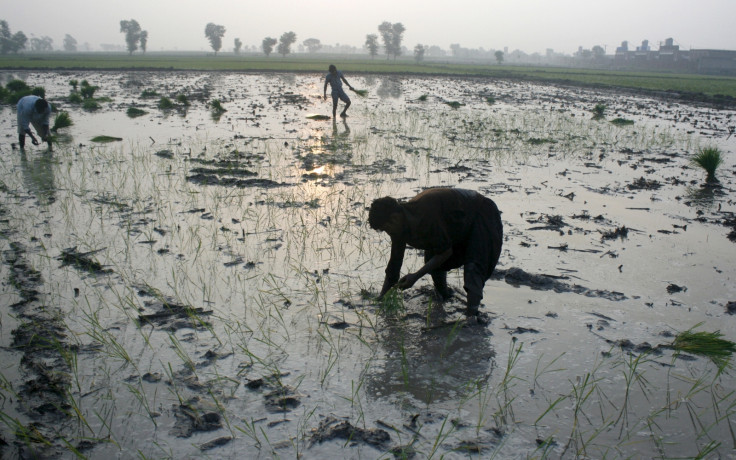Climate-change friendly GM rice also produces more grain

Scientists from China, the US and Sweden have genetically engineered a variety of rice to produce lesser methane and more yield.
All it took was a gene from barley that was inserted into the Nipponbare rice to cut methane emission to 0.3% compared to 10% in control plants.
A single plant of the new breed has 300 more grains with a starch content 10% higher.
The carbon leaked from the paddy roots into the soil is converted by microbes into methane which is 20 times more powerful a greenhouse gas than carbon dioxide.
The inserted gene reduces the amount of carbon (in the form of starch and sugar) stored in the roots of the rice crop by redistributing it into stem and grains.
"For three years of field trials it worked very well," says Chuanxin Sun of the Swedish University of Agricultural Sciences, senior author on the paper.
Now the team will work on developing the same variety by traditional breeding to side-step the prickly GMO issue.
"It solves two major problems mankind faces at one time: environmental degradation and the need for increased grain output," Wang Feng, co-author of the paper from Fujian Academy of Agricultural Sciences told Xinhua.
Golden rice, another genetically engineered rice loaded with Vitamin A compounds, still hardly has takers despite being recognized as a big breakthrough.
Unlike golden rice where a totally alien gene was introduced into the group, here the change is not major but still could have unintended consequences, Paul Bodelier, a microbial ecologist at the Netherlands Institute of Ecology in Wageningen told CSM.
The team isolated one of the three genes that control the distribution of carbon in barley. This was labelled SUSIBA2.
More grains, less methane
It had been noticed that rice plants with the largest number of grains produce the least amount of methane. This could be because more carbon going into rice grains left less carbon to go elsewhere.
In modelling how the gene SUSIBA2 worked in barley "we realized it would be possible to control carbon allocation in rice creating a win-win situation. We would get more starch, more food, and less methane," explains Dr Jansson, currently director of plant sciences at the US Department of Energy's Pacific Northwest National Laboratory.
The study appears in Nature.
Rice paddies are the largest single source of methane linked to human activity, with organic dump yards and cattle belch producing the rest.
Methods to reduce methane emissions from food crops include increasing yields, eliminating rice straw from flooded fields which become fodder for soil microbes that generate methane; and also reducing the amount of water in paddies or changing the flooding schedule to allow paddies to dry out briefly at least once as the rice grows.
Plant researchers have been working to develop rice with higher-nutrition, low-emissions traits and drought resistance as the demand for the cereal grows with a burgeoning population.
Rice forms the staple food of over a billion people in Asia.
© Copyright IBTimes 2025. All rights reserved.





















